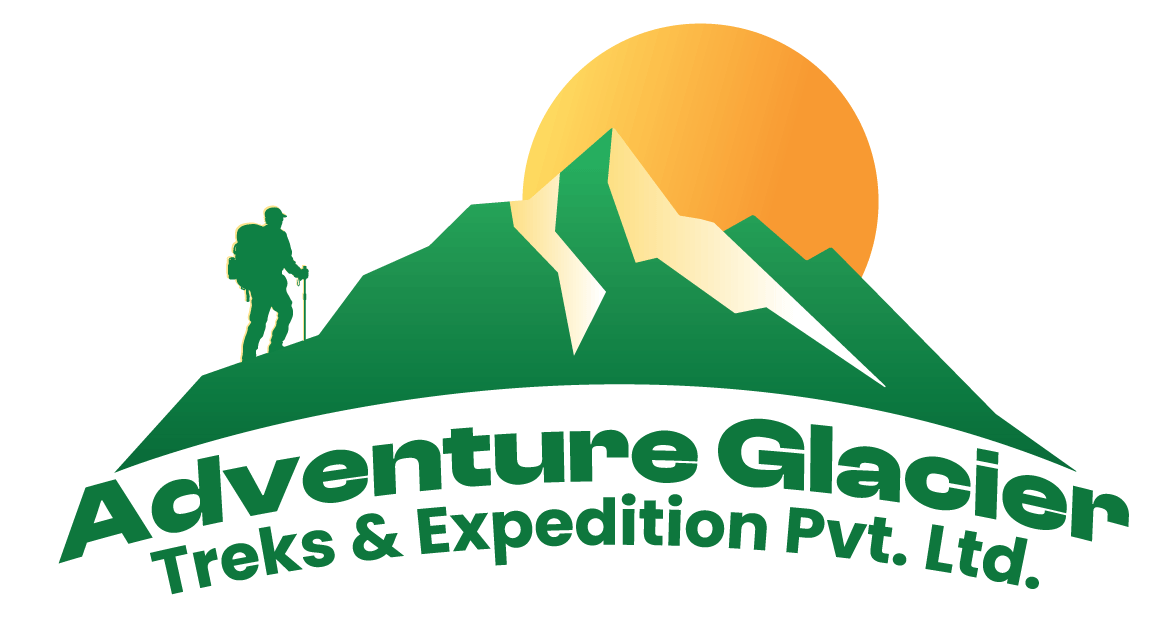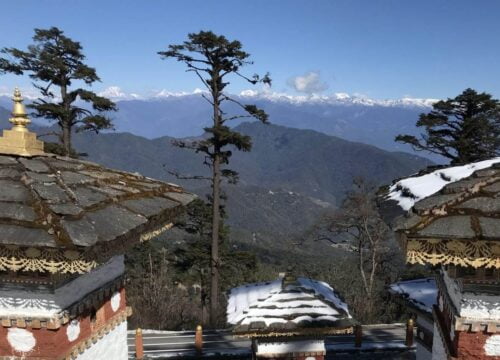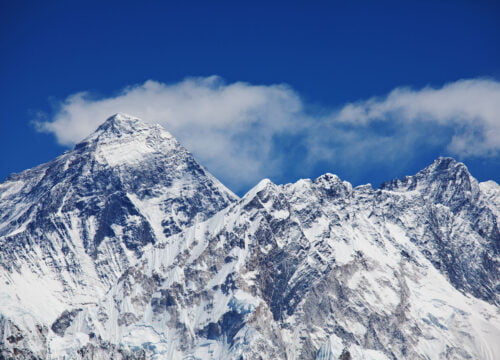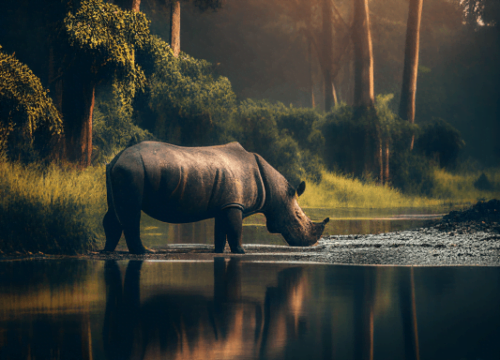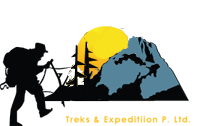Upper Mustang Trek
Trip Overview
Nestled deep in the Himalayan rain shadow, the Upper Mustang Trek unveils a world of stark beauty and ancient mystique. Often referred to as Nepal’s “Forbidden Kingdom,” this remote region remained closed to outsiders until 1992, preserving a way of life untouched by modernity. The trek leads through an arid, windswept landscape of weathered sandstone pillars, deep river valleys, and towering cliffs, where the cultural heritage of Tibetan Buddhism thrives in isolation.
A Landscape Like No Other
The journey begins in Jomsom, where the Kali Gandaki River carves its path through the world’s deepest gorge. As you trek northward, the terrain transforms into a surreal, desert-like expanse, reminiscent of the Tibetan Plateau. The rain shadow effect ensures a dry climate, with strong daytime winds sculpting the earth into mesmerizing formations. The trail meanders past cliff-faced caves, ancient trade routes, and irregular moraine terraces, their hues shifting from earthen reds to golden yellows under the Himalayan sun.
Lo Manthang: The Last Walled City of Tibet
At the heart of Upper Mustang lies Lo Manthang, a medieval walled city ruled by a hereditary king. Encircled by mudbrick fortifications, this timeless enclave is a living museum of Tibetan culture. Whitewashed houses, adorned with intricate Buddhist murals, line the narrow alleys, while centuries-old monasteries (Gompas) echo with the chants of red-robed monks. The Royal Palace, still inhabited by Mustang’s monarch, stands as a silent witness to a vanishing feudal past.
Beyond the city walls, the ruins of sky caves cling to sheer cliffs—mysterious chambers that once served as meditation retreats or even ancient burial sites. Exploring these hidden sanctuaries feels like stepping into a forgotten chapter of Himalayan history.
A Trek Through Living Tradition
The cultural richness of Upper Mustang is unparalleled. Unlike other Himalayan regions, where modernity has diluted traditions, Mustang remains a stronghold of pure Tibetan heritage. The influence of the Bon religion, which predates Buddhism, lingers in rituals and village customs. Along the trail, prayer wheels spin in the wind, mani walls carved with sacred mantras guide the way, and fluttering prayer flags bridge the earthly and divine.
Each village along the route—Kagbeni, Chele, Ghami, Charang—holds its own charm. Kagbeni, a gateway to Mustang, was once a bustling trade post between Nepal and Tibet. Its ancient fortress and labyrinthine lanes whisper tales of caravans laden with salt and wool. Further north, Ghami’s barley fields and Charang’s towering monastery offer glimpses into agrarian life in this high-altitude desert.
Challenges and Preparations
Trekking in Upper Mustang is a moderate adventure, but the high altitude (3,780m / 12,402ft at Lo Manthang) demands proper acclimatization. The dry climate minimizes rain disruptions, but strong winds and cold nights require sturdy gear. A special restricted area permit (USD 500 for 10 days) and a Mustang Conservation Area Permit (MCAP) are mandatory, reinforcing the region’s exclusivity.
Why This Trek Stands Apart
Unlike the crowded trails of Everest or Annapurna, Upper Mustang offers solitude and raw authenticity. The absence of teahouses means nights are spent in traditional village homestays, where the warmth of local hospitality contrasts with the harsh landscape. The vistas are equally unique—Dhaulagiri (8,167m) and Annapurna I (8,091m) dominate the southern skyline, while the Nilgiri and Tilicho peaks glisten in the distance.
A Journey Beyond the Ordinary
The Upper Mustang Trek is more than a hike—it’s a passage through time. From the wind-carved canyons to the chanting monks of Lo Manthang, every step reveals a land suspended between myth and reality. For those seeking adventure, culture, and untouched beauty, this hidden kingdom promises an experience unlike any other in Nepal.
Trip Itinerary
Flying into Kathmandu on a clear day is an exciting experience. A whole series of wonderful memories that stay with you for a very, very long time starts as you look out at the magnificent, snow-capped mountain peaks below you. You will be welcomed at the airport by our representative and our office's driver, who will then guide you to your hotel.
Since Nepal first opened its doors to tourism, the Kathmandu Valley has also become known as the historical and cultural center of the country. The city offers a beautiful fusion of Tibetan Buddhism, Hinduism, and Western influence in the Valley. Its two principal nearby cities, Patan and Bhaktapur, are of enormous historical, cultural, and religious value. A half-day guided trip will visit the well-known and largest Hindu shrine, Pashupatinath; the largest stupa in Buddhism in Nepal; Boudhanath; the Palace of 55 Windows from the 15th century; and Swoyambhunath.
The cost of the tourist bus ride to Pokhara includes transportation (you may either fly there for an additional 97 euros ($118) or take a private car for the same cost, depending on the size of your group).It takes around 7 hours by bus, 5 hours by car, and 25 minutes by flight to travel to Pokhara
We take the amazing early-morning flight to Jomsom (famous for its apples), where our trek crew will be waiting for us at the little airport. Following some initial pack preparation, we start our hike to the beautiful settlement of Kagbeni. We cross a brief suspension bridge just outside of Jomsom before proceeding to walk along the Kali Gandaki's bank. The trail is downhill and mostly empty, with wrinkled pebbles and sand all over it. This gives it a very laid-back feel. Huge peaks like Dhaulagiri, Tukuche, and Nilgiri will be visible to us, while to the south the entire Annapurna range can be seen. .
The trail soon becomes significantly wider, revealing an endless stretch of sand, but the passing of mule trains carrying cargo from Mustang and Tibet keeps the path interestingOn the west bank of the river, there are various caves and Gompa Kang.While Gompa Kang belongs to the Nyingmapa sect, the majority of the monasteries in Upper Mustang are Sakyapa. We probably make a lunch stop at Tangbe, where we first see the distinctive black, white, and red Chortens of Upper Mustang. The tiny hamlet is a maze of narrow lanes surrounded by whitewashed homes, buckwheat and barley fields, and apple orchards. The southern skyline is still dominated by Nilgiri Peak. Tangbe is about a two-hour trek from Chhuksang Village.
Settlements grow more rare, smaller and more primitive due to changes not just in the geography but also in civilization, lifestyle, and people. The residents of Lo or Mustang are farmers. However due to a lack of rain and rich soil, only protected areas of land can be farmed. the dark terrain with green patches. moving northward. North of here, the Kali Gandaki is inaccessible by foot, and when we get to the river, a steel bridge crosses it right in front of a tunnel. The route now leave the valley and climbs up a rocky gully steeply to the town of Chele. Please be aware of the vicious Tibetan mastiffs that are chained to several of the homes in this area. From Chele, you hike a rocky hill before continuing up the wall of a breathtakingly steep canyon until you reach a pass. After the pass, we descend on a nice trail to Samar, which is located in a poplar tree forest. Horse and mule caravans frequently rest here on their journeys.
We hike to a mountain above Samar, descend into a wide gorge past a chorten, and then enter another valley with juniper trees. After climbing to a pass, we descend along a ridge to Shyangmochen, a little village with a few tea shops, after crossing a stream. One of the holiest locations in Mustang is nearby Rangbyung, a cave with stalagmites that have evolved into chortens. From Shyangmochen, the trail rises without difficulty, taking us into another large valley before dropping to Geling, where there are immense fields of barley. The white and ochre-painted homes in Geling are made of mud and stones, just like in other settlements in Mustang. The roofs are constructed with branches and straw
The trail leaves Geling and ascends slowly through fields and up the valley's middle, passing above Tama Gun's hamlet and its spectacular chorten. After that, we start a challenging ascent across the valley's head to reach the Nyi La (3840m). The descent from the pass is very peaceful, and after another 30 minutes or so, we reach a trail intersection where we may choose to take the right trail directly to Charang or the left trail to Ghami. A large settlement covered with whitewash and protected by cliffs is called Ghami.
We will spend a significant portion of our energy navigating the loose, dry earth today because our walk will likely take us into the driest area of Mustang. The breathtaking views of the surrounding area, from the north's soft contours to the east and west's mountainous terrain, more than make up for the challenging ascent. Finally, we reach Charang, a big village that is widely dispersed near the apex of the Charang Chu canyon. An large dzong [fortress] and a red gompa, which together hold an exceptional collection of statues and thangkas, are located at the eastern end of the hamlet.
Before departing for Lo Manthang, we spend a part of the morning touring the charming village of Charang and its magnificent monastery. We make a gentle ascent above the valley to a sizable, single chorten that serves as Lo Manthang's and Charang's dividing line. The path soon becomes wider, and at its end, we catch our first glimpse of Lo Manthang's walled city. We walk around the wall to the gate on the northeast corner of the city because there is only one entrance.
We get the day off to explore around the beautiful village of Lo Manthang. There are around 150 homes in the community, not counting the many lamas' homes. There are four main temples in the village, and Champa Lhakang is one of them. It houses a big clay statue of Buddha and has artistic mandalas painted on its walls. The present king and queen reside in the imposing king's palace, which is located in the center of the hamlet. The people respect the king despite the fact that most of his responsibilities are ceremonial. The villages in the kingdom continue to seek his advice on a wide range of topics. Horses can be rented to travel across these valleys, although this quick excursion will cost extra.
At Lo Manthang, we started out on our return journey via the upper highland route. With snow-covered peaks in the distance, this highland route offers breathtaking views of Lo Manthang and the Charang Valley. We arrive at the Ghar-Gompa, Mustang's oldest monastery, just past the community of Lo Gekar. We trek by way of the highlands, passing through alpine meadows before descending steeply through an ancient gully to reach Dhakmar for lunch. We hike along the lovely valley after lunch before ascending to a ridge and then descending to Ghami.
We continue to enjoy the views of the Dhaulagiri and Nilgiri mountains as we travel from Shyanboochen on the lower trail via Rachen Gompa. A mysterious gompa called Rachen Gompa has risen from the rocky cave. Samar comes next, followed by Chaile.
We must return our steps back to Chhuksang for a bit before taking the upper road to Muktinath, a Hindu shrine located at the summit of the tallest peak (3900M). Many Nepali and Indian pilgrims may be seen walking in their bare feet at this site. Or you can hike back to Kagbeni using the same route.
We return through Kagbeni to Jomsom, where our journey comes to a conclusion. We should now take a relaxing, hot shower. With the sherpas and porters, whom we have gotten to know so well over the past two weeks, we might celebrate in the evening.
FAQs
How to prepare for high-altitude glacier trekking?
- Train physically with cardio and strength exercises.
- Acclimatize properly by ascending slowly and taking rest days.
- Stay hydrated and eat a balanced diet.
- Learn about altitude sickness symptoms and prevention.
Where is Upper Mustang, and why is it special?
Upper Mustang is a remote region in north-central Nepal, bordering Tibet. It is often called the “Last Forbidden Kingdom” due to its restricted access and preserved Tibetan culture. The region is known for its arid desert landscapes, ancient monasteries, and unique traditions.
How difficult is the Upper Mustang Trek?
The trek is considered moderate in difficulty. While the trails are not extremely steep, the high altitude (up to 4,000 meters) and long walking days can be challenging. Good physical fitness and prior trekking experience are recommended.
What permits are required for the Upper Mustang Trek?
- Annapurna Conservation Area Permit (ACAP)
- Upper Mustang Restricted Area Permit (expensive and requires a licensed guide)
- TIMS Card (Trekkers’ Information Management System)
What is the accommodation like in Upper Mustang?
- Accommodation is basic but comfortable, with teahouses and lodges available in most villages. These provide simple rooms with shared bathrooms. In remote areas, facilities may be more rustic.
What are the highlights of the Upper Mustang Trek?
- Lo Manthang: The ancient walled city and capital of Upper Mustang, home to the Royal Palace and numerous monasteries.
- Tiji Festival: A vibrant three-day festival held in Lo Manthang (usually in May).
- Ancient Monasteries: Visit monasteries like Thubchen Gompa and Ghar Gompa, which date back centuries.
- Unique Landscapes: Explore the arid desert-like terrain, red cliffs, and dramatic rock formations.
- Caves and Fortresses: Discover ancient caves, such as the Sky Caves of Chhoser, and historic fortresses.
How do I get to Upper Mustang?
The trek usually starts with a flight from Pokhara to Jomsom. From Jomsom, the trek begins, passing through Kagbeni, Chele, and other villages before reaching Lo Manthang.
Is altitude sickness a concern on the Upper Mustang Trek?
Altitude sickness is a moderate concern, as the trek reaches elevations of up to 4,000 meters. Proper acclimatization, hydration, and a slow ascent are crucial to avoid altitude-related issues.
What is the food like on the Upper Mustang Trek?
Food options are basic but sufficient. You’ll find staples like dal bhat (rice and lentils), noodles, Tibetan bread, and soups. Some lodges may offer limited international dishes like pasta or pancakes.
Can I visit Upper Mustang on a motorcycle or jeep?
Yes, Upper Mustang can also be explored on a motorcycle or jeep tour. This is a popular option for those who want to experience the region’s beauty without trekking. However, permits and a guide are still required.
What is the culture like in Upper Mustang?
The culture is deeply rooted in Tibetan Buddhism, with strong influences from the ancient Bon religion. The people of Upper Mustang are warm and welcoming, and their traditions, festivals, and way of life have remained largely unchanged for centuries.
Can I combine the Upper Mustang Trek with other treks?
Yes, many trekkers combine the Upper Mustang Trek with the Annapurna Circuit or Annapurna Base Camp Trek for a more extended adventure.
What is the Tiji Festival, and can I attend it?
The Tiji Festival is a three-day Buddhist festival held in Lo Manthang, usually in May. It celebrates the victory of good over evil and features vibrant masked dances, rituals, and cultural performances. If your trek coincides with the festival, it’s a must-see experience!
What should I pack for the Upper Mustang Trek?
- Sturdy trekking boots and warm clothing (layers for cold nights)
- Sleeping bag (teahouses may not provide adequate bedding)
- Trekking poles and sunglasses (for dusty trails and bright sun)
- Water purification tablets or a filtration system
- First aid kit and altitude sickness medication
- Solar charger or power bank (limited electricity)
Book Now
Price Includes
- Airport Pick up/drop
- Two nights accommodation in kathmandu & Two nights Pokhara at tourist standard hotel
- Sightseeing in around kathmandu & Pokhara valley by private vehicle and a professional city guide
- All inclusive trek such as Ground transportation, necessary permits ( including special permit), entrance fees, professional guide, porter, and their expenses including their insurance and equipments
- Accommodation at lodges en route
- 3 Meal a day With cup of tea/coffee
- Flight tickets for the trek group & guide from Jomsom -Pokhara
Price Excludes
- Beverages
- Tips
- Your insurance
- Personal/Natural expenses
- Food in Kathmandu & Pokhara.



